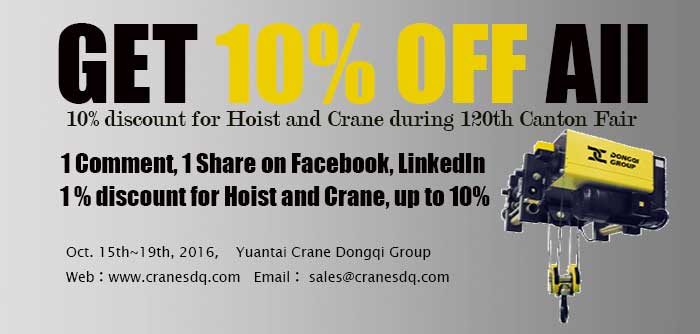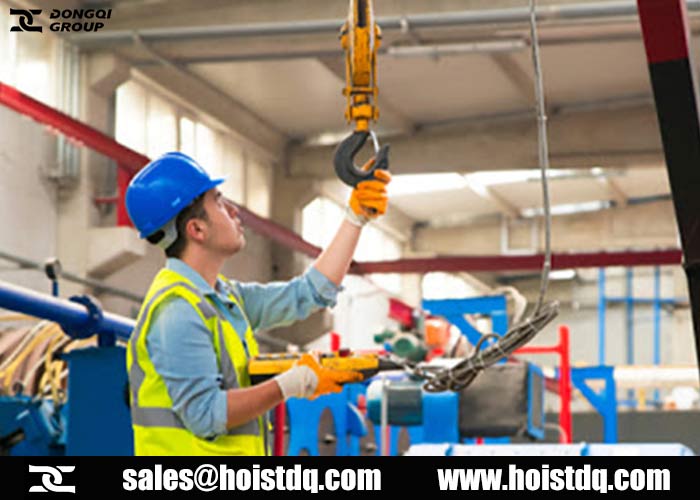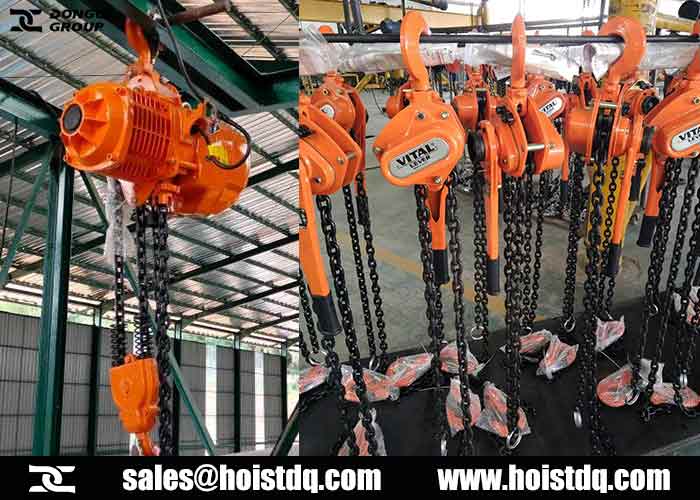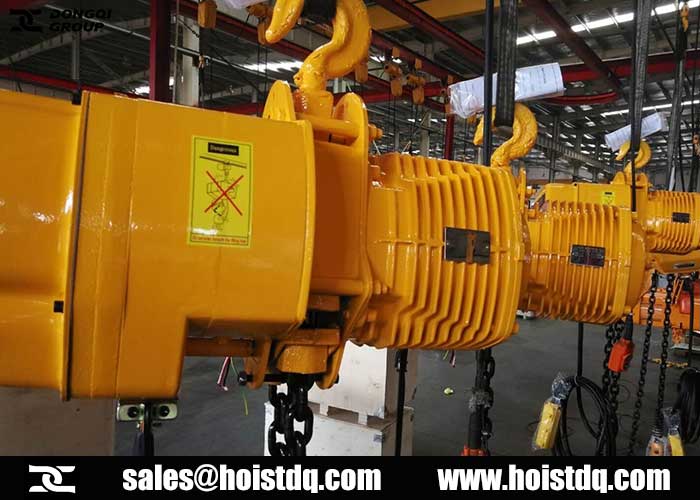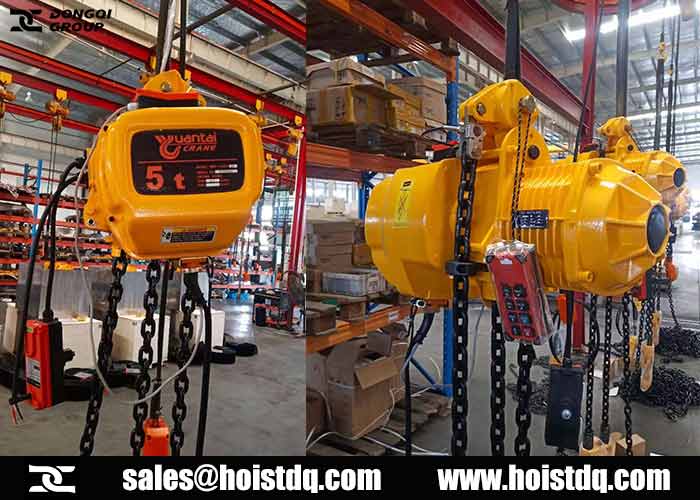Inspections and Maintenance are so important to your electric chain hoists, it ensures that they are in proper working order and ready for use when you need them.
How to Inspect and Maintain Electric Chain Hoist?
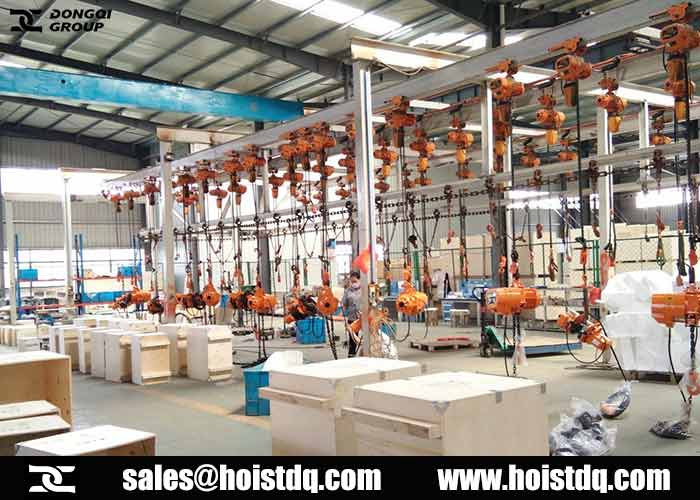
Pre-use Inspection:
- Visually inspect the load chains for any damage.
- Make sure the hoist is properly secured.
- Ensure the load does not exceed the loading limit.
- Check to ensure the motions are smooth and regular and that there are no hesitations, vibrations, binding, unusual noises or any other irregularities.
- Make sure the chain is not kinked or damaged.
Ensure that you follow these rules:
- Do not lift a load that exceeds the capacity of the chain block.
- Do not use the block chain as a sling.
- Ensure that the chain is not kinked before using it.
- Make sure that no one is working or passing under a lifting load.
- If the hand chain does not move, do NOT use force, stop operations and inspect the chain block.
- Only lift vertically, do not drag a load.
After-use Maintenance:
- You can clean the chain block of any dirt and then store it in a dry place to prevent rust and corrosion from forming.
- Place the rollers of both the left and right bearings to the inner race of the bearings on the chain sprocket shaft journal, then place the outer race of the bearings on the side plates.
- Once annual cleaning and repair of the chain block are complete it should be then placed under a non-load and heavy load test. If it passes it then may be placed into operation.
Annual Inspections:
- Checking the operating mechanisms for maladjustment and listening for any unusual sounds.
- Checking the tightness of any bolts, nuts and/or rivets.
- Looking for excessive wear, corrosion, cracks or distortion in any of the following parts: load blocks, suspension housing, hand chain wheels, chain attachments, clevises, yokes, suspension bolts, shafts, gears, bearings, pins, rollers and locking/clamping devices.
- Looking for damage or wear on the hook-retaining nuts or collars, pins, welds and rivets that are used to secure the retaining members.
- Reviewing the hand chain operated hoists and looking for evidence of worn, glazed, or oil-contaminated friction disks.
- Checking for any signs of damage to the supporting structure/trolley.
- Making sure the end connection load chains have no signs of wear, corrosion, cracks, damage or distortion.
